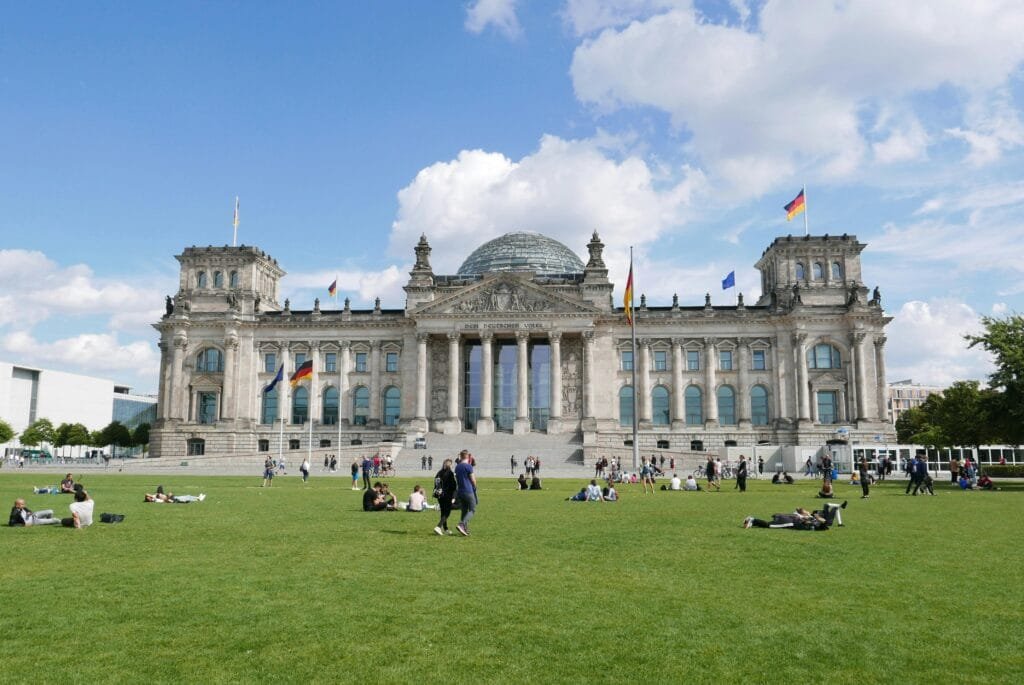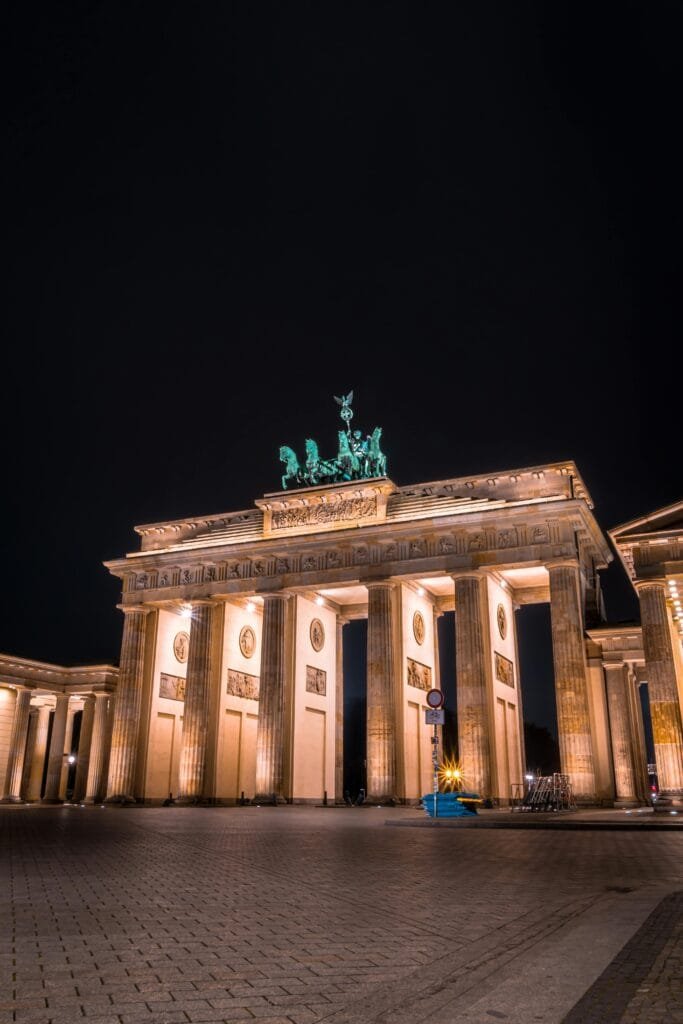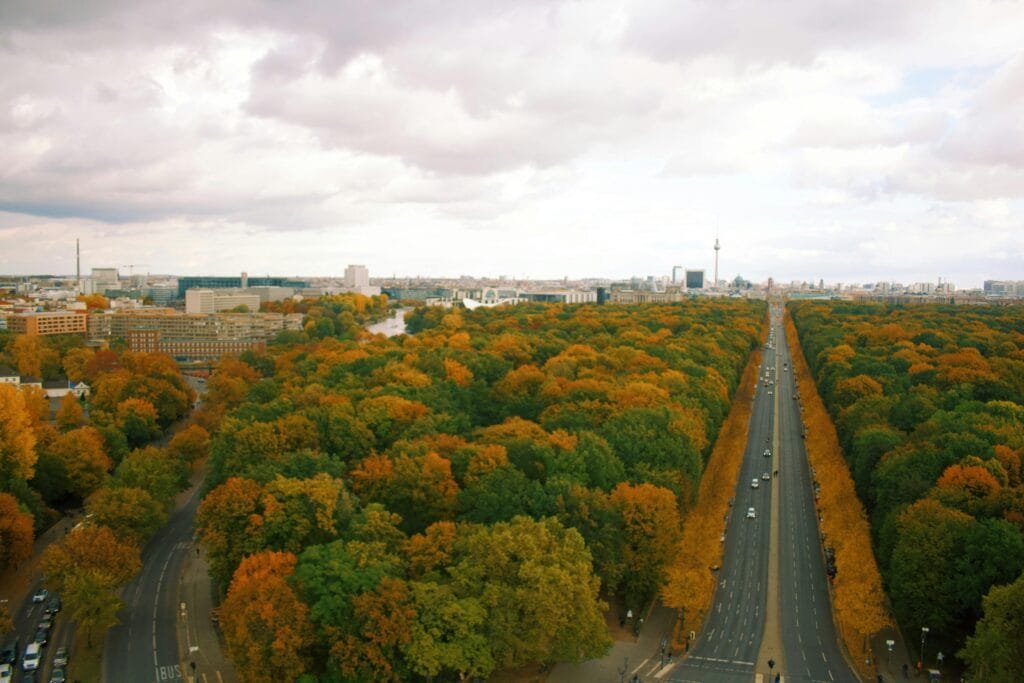Table of Contents
Introduction to the Reichstag Building

The Reichstag Building is one of Berlin’s most iconic landmarks and a powerful symbol of Germany’s history, resilience, and democracy. Located in the heart of the city near the Brandenburg Gate, this historic structure serves as the home of the Bundestag, Germany’s federal parliament.
With its stunning architecture, rich history, and famous glass dome, the Reichstag attracts millions of visitors each year. It offers a unique opportunity to explore the intersection of history, politics, and modernity.
History of the Reichstag Building
The Reichstag Building was constructed between 1884 and 1894, based on a design by architect Paul Wallot. It served as the seat of the German parliament until 1933, when it was severely damaged in a mysterious fire. The Reichstag fire became a pivotal event in German history, as it was used by the Nazis to consolidate power.
During World War II, the building suffered further damage during the Battle of Berlin. After the war, it stood as a symbol of Germany’s division during the Cold War. Following reunification in 1990, the Reichstag was restored and transformed into the modern parliamentary building we see today, with a glass dome designed by British architect Norman Foster.
Architecture of the Reichstag Building
Original Design
Paul Wallot’s design blended Renaissance and classical architectural styles, featuring grand columns, a large central dome, and intricate sculptures. The building was a testament to Germany’s ambition and unity during the late 19th century.
The Glass Dome
The glass dome, added during the restoration in the 1990s, is one of the Reichstag’s most distinctive features. Designed by Norman Foster, the dome symbolizes transparency in governance, allowing visitors to observe parliamentary proceedings below.
The dome’s spiral walkway offers a 360-degree view of Berlin, while its central mirrored cone reflects natural light into the Plenary Hall, reducing the building’s energy consumption. This combination of sustainability and symbolism makes the dome a highlight of any visit.
The Reichstag Today
Today, the Reichstag Building is a functioning seat of government and a top tourist attraction. It is home to the Bundestag, where Germany’s elected representatives debate and pass legislation. Visitors can explore the building’s public areas, including the dome and rooftop terrace, to learn about German history and democracy while enjoying panoramic views of Berlin.
Visiting the Reichstag Building
How to Book Your Visit
Visits to the Reichstag Building are free of charge, but advance registration is required. You can book your visit online through the Bundestag’s official website. Early booking is recommended, especially during peak tourist seasons.
Guided Tours and Exhibitions
Guided tours offer an in-depth look at the Reichstag’s history, architecture, and political significance. Highlights include the Plenary Hall, where parliamentary sessions are held, and exhibitions showcasing the building’s transformation over the years. Self-guided audio tours are also available for a flexible experience.
Cultural and Historical Significance
The Reichstag Building is not just a political landmark—it’s a symbol of Germany’s turbulent history and its commitment to democracy. Inscriptions on the walls, left by Soviet soldiers during the Battle of Berlin, serve as a poignant reminder of the building’s past.
Memorials within the Reichstag honor key figures and events in German history, reflecting the country’s journey from division to unity.
Map Location
Nearby Attractions to Explore
Brandenburg Gate

Just a short walk from the Reichstag, the Brandenburg Gate is an iconic symbol of unity and peace, with deep historical ties to Germany’s reunification.
Read More…
- To discover more about the Brandenburg Gate, one of Berlin’s most iconic landmarks, you can visit the detailed page on Discover Brandenburg Gate: The Iconic Landmark of Berlin here.
Tiergarten

Adjacent to the Reichstag, Tiergarten is Berlin’s largest urban park, offering a peaceful retreat with walking paths, gardens, and monuments.
Holocaust Memorial

A sobering and powerful tribute to the victims of the Holocaust, this memorial is located nearby and is a must-visit for those exploring Berlin’s history.
Tips for Visiting the Reichstag Building
- Arrive Early: Morning visits are less crowded, allowing for a more relaxed experience.
- Dress Comfortably: Wear comfortable shoes for walking, especially if you plan to explore nearby attractions.
- Bring a Camera: The rooftop terrace and dome offer excellent photo opportunities of Berlin’s skyline.+
Conclusion
The Reichstag Building is a fascinating blend of history, architecture, and democracy. From its storied past to its modern-day significance as the heart of German governance, the Reichstag offers an enriching experience for visitors. Whether you’re admiring the glass dome, exploring the Plenary Hall, or taking in the views of Berlin, this iconic landmark is a must-visit destination for anyone exploring Germany’s capital.
FAQs About Reichstag Building
1. Why is the Reichstag Building famous?
The Reichstag Building is renowned for its historical significance, architectural beauty, and role as the home of Germany’s federal parliament.
2. Can visitors access the glass dome?
Yes, visitors can access the glass dome and rooftop terrace with prior registration.
3. How long does it take to tour the Reichstag Building?
A typical visit takes 1-2 hours, depending on whether you take a guided tour or explore independently.
4. What is the best time to visit the Reichstag Building?
Morning visits are ideal for avoiding crowds, while evening visits offer stunning views of Berlin illuminated at night.
5. Are there any entry fees for the Reichstag Building?
No, entry to the Reichstag Building is free, but advance registration is required.
For more detailed information, please visit the official website of the German Bundestag.

